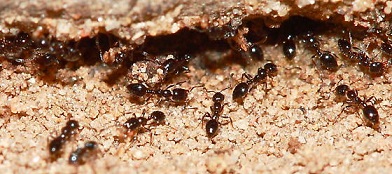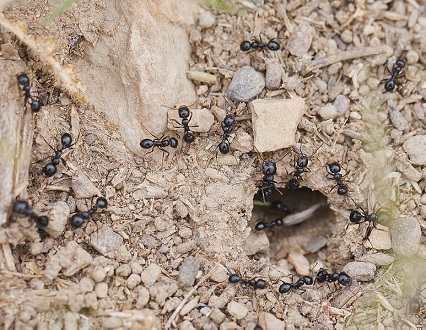Habitat
The Monomorium minimum is also known as the “Little Black
Ant” (Bhatkar, 1992). This species is native to North America.
It is located in Southeastern Canada and Northern and
Eastern regions of the United States (Stanley et al. 2012). It
is one of the 326 minimum ant species that resides in North
America (Bhatkar 1992). This species is extremely common within
the United States; however, these ants are fairly rare to find
in the Pacific Northwest region of the United States (Entomology
Collection 2013). M. minimum mainly resides in Texas, Louisiana,
Kansas, Wisconsin, North Dakota, Pennsylvania, Washington,
Washington D.C., Florida, Idaho, and Canada (Bhatkar 1992). This
ant has somehow been introduced to the country of Malaysia in
Asia, and Hawaii within the United States (Stanley et al. 2012).
Wisconsin, North Dakota, Pennsylvania, Washington,
Washington D.C., Florida, Idaho, and Canada (Bhatkar 1992). This
ant has somehow been introduced to the country of Malaysia in
Asia, and Hawaii within the United States (Stanley et al. 2012).
M. minimum has also taken up residence within the Western Cape of South Africa according to the Global Biodiversity Information Facility database. Up to this point, there have not been any negative allegations that have been attributed to the incorporation of this organism into these new areas.
This species of ant tolerates various amplitudes and habitat conditions. They live in regions where they are at sea level to where they are approximately 2,438 meters above sea level (Stanley et al. 2012). They seek out and live in dry soil habitats, sandy or grassland like areas, forest, meadows, woodlands, prairie, desert, exposed bedrock, and even roadside (Bhatkar 1992, Stanley et al. 2012, Entomology Collection 2013). However, M. minimum prefers to take up residence in moist habitats near wooded areas (Bhatkar 1992, Stanley et al. 2012).
This type of ant is most commonly known for being a pest to many
homeowners. They
force themselves into the homes of many individuals, and make their way
into the masonry and woodwork in the United States (Smith 1965, Keck 2005, Stanley et al. 2012).
These ants continue to be prevalent outside the home as well. They can
be found in potted plants and flowerpots, brick walkways and patios,
fence posts, stumps, mulched areas, and landscape stone (Bhatkar 1992,
Stanley et al. 2012, Entomology Collection 2013). M. minimum
like to make their nests in a manner of various ways: such as in open
soil or sandy areas, or under the cover of numerous different objects
such as stones, rotting wood or bark (Bhatkar 1992, Keck 2005). As adaptive as these ants are to their
surroundings, they do prefer the covered areas as opposed to being out in the
open if they have the option.

As mentioned above, this organism has a variable climate and other environmental conditions within its habitat. Due to their wide range of living circumstances, they are able to inhabit many regions of North America.
Interested in finding out how these ants move and behave? Click Form & Function for more information.
Click here to return to the Home page.
Click here for References.